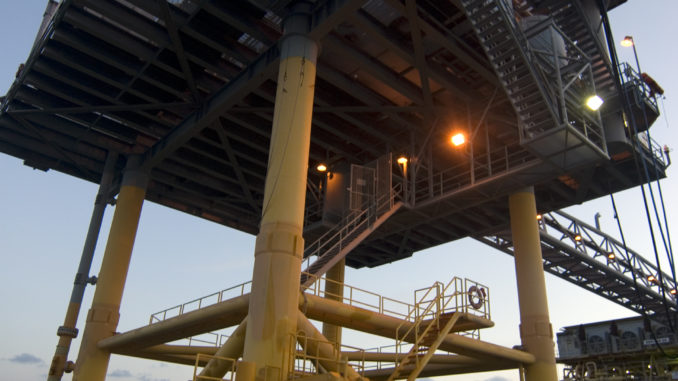
U.S. Department of Interior order mandates old rigs be removed, CCA says.
Legislation introduced in the U.S. Congress that would prevent rigs and other Gulf of Mexico structures from being removed as ordered by the U.S. Department of Interior should be passed, the Coastal Conservation Association said today.
The Rigs to Reefs Habitat Protection Act of 2011, introduced by Republican Sen. David Vitter, seeks to allows structures to remain in the Gulf as artificial reefs.
In the wake of the BP Deepwater Horizon spill, the Department of Interior ordered that all non-producing rigs be plugged and removed within five years, CCA reported.
“More than ever, we need to create habitat for marine life in the Gulf, not dispose of it,” Sen. Vitter said. “These idle rigs are serving a valuable purpose by supporting our fisheries, and it just doesn’t make sense to remove them.”
CCA National Government Relations Committee Chairman Chester Brown said the reefs are vital to maintaining the populations of numerous offshore species.
“The structures are generally regarded as the largest man-made artificial reef in the world, providing habitat to dozens of species of fish and marine life, many of which are structure-dependent,” Brewer said. “Sen. Vitter, like all fishermen, realizes the critical connection between habitat and healthy fisheries, and we are grateful for his efforts to have those structures stay in the water as habitat and as popular fishing destinations for recreational anglers.”
There are approximately 3,500 offshore structures in the Gulf of Mexico. The Department of Interior directive, known as the Idle Iron Policy, would impact roughly 650 structures that have not produced oil or gas within five years of the directive issue date of Oct. 15, 2010.
“If nothing is done, a tremendous amount of habitat will be lost and the negative impact would be massive,” Brewer said. “In the aftermath of the oil spill disaster, it is understandable that the federal government felt the need to be seen taking action, but this directive could create far more problems than it solves.
“Sen. Vitter’s legislation serves as a reasonable approach to address … concerns while maintaining this vital habitat.”
The Rigs to Reefs Habitat Protection Act would not allow platforms to be removed until an assessment has been completed to determine whether there are coral populations or other protected species in the vicinity of the platform, and to identify any species that have recreational or commercial value that are using the structure.
If it is determined that there is a substantial reef ecosystem around the structure, the decommissioning of the platform would be halted until it can be determined that removing it would not harm the reef ecosystem.
The legislation also states that companies are exempt from the requirement to remove platforms from the marine environment as long as the owner commits to converting the platform into an artificial reef either by initiating discussions with state governments regarding potential sites for the artificial reef or by taking steps to provide for “reefing in place.”
For reefing in place, the act outlines several steps that must be taken, including removal of the top decks, maintaining an anode system and navigation aids, and paying into a reef maintenance fund created by the legislation. Payments into this fund should equal the estimated costs associated with the removal of the platform that the owner would have been responsible for if the owner had not elected to reef the structure.
The reef maintenance fund is to be available without fiscal-year limitation and not subject to appropriation, for the maintenance of artificial reefs established under this program.
“This is a well thought-out solution that works for everyone, but most importantly it works best for the marine environment,” Brewer said. “We look forward to working with Sen. Vitter and with Congress to get this bill passed as quickly as possible and keep those platforms in the Gulf as vital artificial reefs.”


